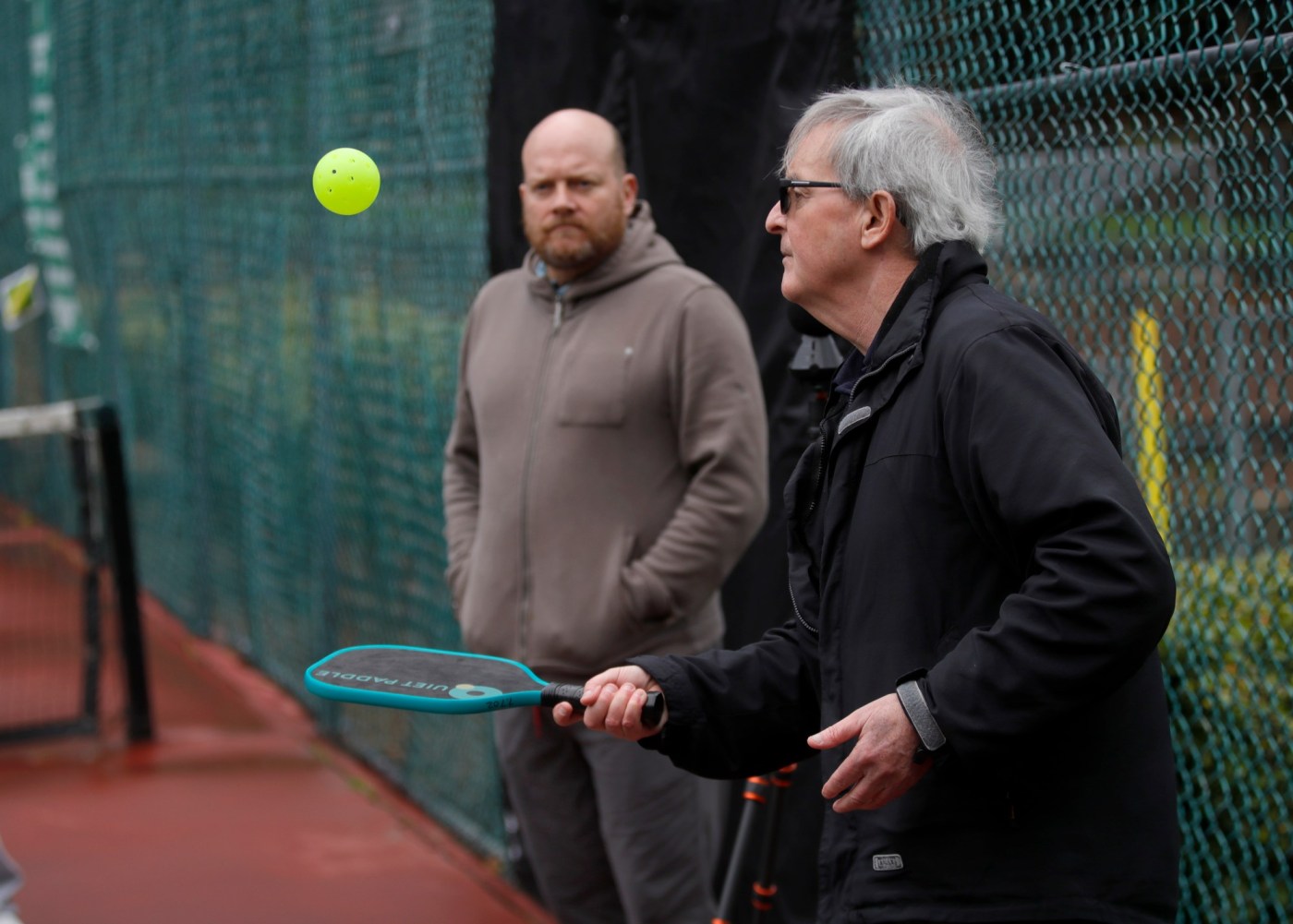
New, quieter Pickleball equipment takes a swing at the sport’s noise problem
PIEDMONT, California — The “pop, pop, pop” that’s become synonymous with Pickleball may soon be a racket of the past.
At least, that’s the lofty goal promised by a new generation of equipment and technology specifically developed to lessen the frequency, pitch and overall acoustic burden of the booming sport.
Rather than listening to plastic-y staccato “thwacks,” imagine slightly padded “thumps” when paddles and balls collide.
News of this emerging gear could be music to non-players’ ears, especially as the fast-growing sport has sparked neighborhood clashes and legal battles in recent years; complaints have popped up in Berkeley, San Francisco, Los Altos, Menlo Park, Walnut Creek and across the Bay Area, but residents and elected officials have continually struggled to craft solutions that resolve Pickleball’s cacophonous soundtrack without shutting down the sport altogether.
Carl Schmits, managing director of facilities development and equipment standards for USA Pickleball, said that as tennis courts, basketball courts and other spaces in community parks were rapidly converted to try and meet the demand of Pickleball players across the Bay Area, many of those changes happened without much research into how the game might increase the amount of noise and number of people in those spaces.
Schmits said that’s why Pickleball USA has been researching and investing in solutions with acoustic engineering firms for the past 18 months — aiming to change the actual sound of the game, and also help local communities understand how to best study and improve the acoustics of existing facilities before installing additional courts.
On Wednesday, he demonstrated a handful of new equipment specifically designed for quieter play at Piedmont’s Linda Beach Pickleball Courts. That location was fitting, since players are already required — or at least encouraged — to only use equipment that’s been certified in USA Pickleball’s newly launched “Quiet Category” of products. Piedmont officials have even printed out a color-coded list of acceptable paddles and balls to use at Linda Beach.
Generally speaking, Schmits said “quiet” certified paddles can reduce the sound of contact from 90 decibels — roughly the volume of hairdryers and power tools — down to only 80 decibels, which is closer to the noise levels measured on a busy downtown street or near a garbage disposal. He said this new generation of gear also aims to lower the pitch of the ball “pops,” which can negatively impact players’ hearing.
Since the launch of the first quiet paddles by OWL Sport in November, Schmits said it’s possible to cut the acoustic signature of the sport in half, especially when combined with other interventions, such as fabric sheaths that cover louder paddles and sound-absorbing panels designed with innovative nanofiber carbon fibers and polymer cores that can be installed along fences around Pickleball courts.
“It’s a difficult engineering challenge to squeeze any more noise out,” Schmits said, explaining why Pickleball USA is also researching ways that A.I. and other technologies can help assess and monitor the din of gameplay. “But this new category (of quieter products) that we created will help address very sensitive situations.”
Eliot Arnold, founder and CEO of SLN/CR — a Kansas City-based startup that produces sound-absorbing panels — emphasized that in addition to the physical equipment being manufactured, objective data and real-time awareness of the soundscape around Pickleball courts will be vital to the sport’s ongoing innovation, as well as its ability to address issues proactively.
Related Articles
What parents should know before heading to the ER
How to save your skin from dry, cold winter
For artist Helena Kim, restoring vintage leather is a lesson in self-care — and in going viral
12 things that you can buy on sale in January
Comedian Tom Smothers, one-half of the Smothers Brothers, dies at 86
“As the sport grows, there’s going to be more need to collect information and analyze information — not just going off people’s opinions,” Arnold said. “Instead of having a neighbor call (about noise), can we build a system that alerts the community, law enforcement or Parks and Rec.?”
Justin Long, director of the city of Alameda’s Recreation and Park Department, is one of many city administrators who are increasingly trying to find new tools and data to understand — let alone mitigate — just how much noise Pickleball games create.
Since it’s often difficult to isolate which activities and people are contributing to noise complaints, he said information from product research and acoustic baseline studies will make it easier for local decision-makers to balance the perspectives of both Pickleball players and neighbors living near their courts.
“(This kind of data is) helping us navigate the conversation between opposing sides,” Long said Wednesday. “We want to make sure that we’re providing activities for everyone in the community, but how do you balance such opposing forces? It invites conflict because in every city, land is a premium. We can’t just expand every sport.”
Even though this new type of equipment may present additional challenges down the line — especially since new gear can often be more expensive and inaccessible, he supports any additional resources that civic leaders like him can use to be good stewards for everybody.
“The good thing is that the dialogues are happening,” Long said. “It doesn’t need to happen in court.”


